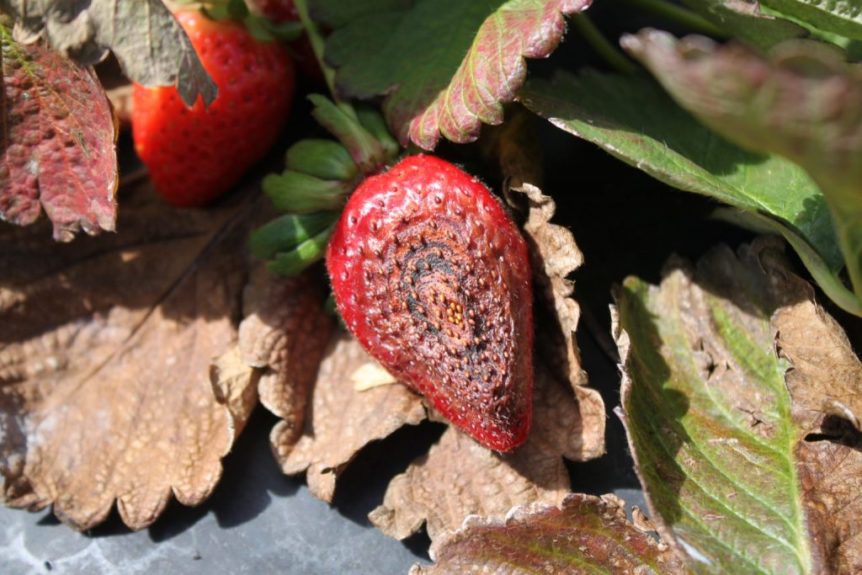
By Clint Thompson
Strawberry growers normally do not have to be as aggressive with their fungicide sprays in the fall. That mindset changes, however, with Neopestalotiopsis (Neo).
Phil Brannen, University of Georgia (UGA) Cooperative Extension fruit disease specialist, said growers can not wait as long between fungicide sprays if they have the disease present in their fields.
“Generally, if it’s a pretty dry area, you can spray every 10 to 14 days. If you’re in a wet area, you’re going on a 7-to-10 day schedule. That kind of depends on when you can get in the field, depending on how wet it is and all of that kind of stuff. That’s what you’re shooting for,” Brannen said. “When you have Neo and it’s wet, you’re going to have to tighten the schedule up.

“Even in the fall with a regular situation, if you’ve got a lot of rain, you probably need to put out more fungicides and tighten the schedule there. For the most part, Captan in the fall every two weeks is more than sufficient for most diseases. If you had leaf spots to show up, then I would recommend that you add in the tank mix with the Captan some DMI products such as Rally.”
Disease Background
Neopestalotiopsis has been a danger to strawberry plants every year since it was first discovered during the 2018–19 season on five farms in Florida. The disease’s initial discovery was attributed to one nursery source in North Carolina. More than 20 farms experienced the disease during the 2019–20 season after it was attributed to two nursery sources early in the season in North Carolina and Canada.
Its concern last year stemmed from its heavy presence in plug plants at nursery sources in Canada. The disease’s confirmed presence in plants before they even left nurseries left many growers in dire straits.
“Last year was a terrible year for a lot of producers,” Brannen said. “Because of the panic we had last year, a lot of growers are treating their plants as if they have Neo whether they did or not. I think now we have the opportunity to sit back and think, ‘What do I want to do?’ ‘Do I treat my plantings as if I have Neo or do I feel pretty secure that I’m okay?’”
Neo can lead to severe leaf spotting and blighting under favorable weather conditions, specifically during extended periods of wetness.










